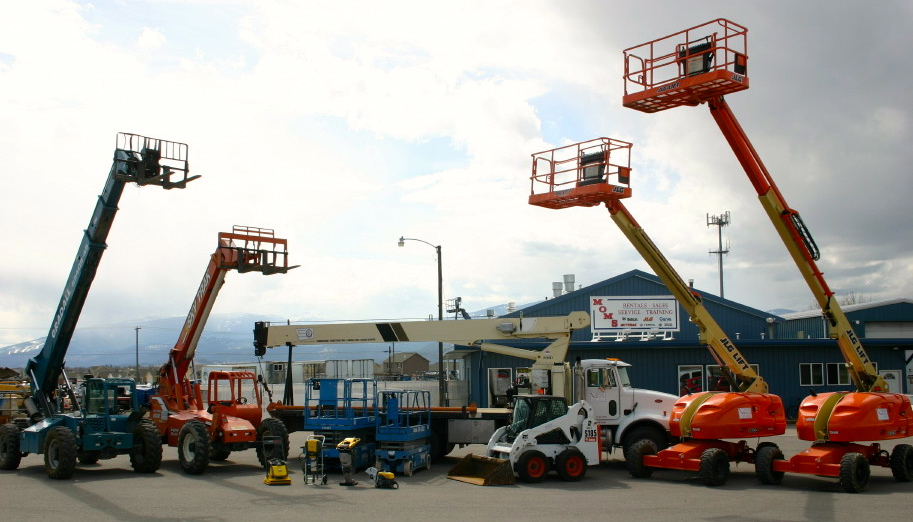Mini Excavator Rental: Compact Machines for Strict Spaces
Mini Excavator Rental: Compact Machines for Strict Spaces
Blog Article
Optimize Your Spending Plan by Comprehending the Expenses Associated With Building And Construction Devices Rentals
Understanding the complete range of prices associated with building and construction equipment leasings is crucial for optimizing your budget. What methods can be used to efficiently take care of these prices and make certain a much more efficient rental experience?
Review of Rental Prices
When considering building equipment rentals, recognizing the associated costs is critical for effective budgeting and task preparation. Rental expenses can differ substantially based on a number of variables, including tools type, period of rental, and area. The preliminary rental cost typically reflects the devices's market demand and its linked operational capacities, influencing the general expenditure.
Along with the base rental rate, secondary costs may emerge, such as transportation charges, fuel surcharges, and upkeep charges. It is important to account for these extra expenditures to accurately examine the complete cost of leasing tools. Additionally, the rental duration can impact prices; longer leasings might receive affordable rates, while short-term leasings could sustain greater daily charges.

Malfunction of Rental Prices
A detailed understanding of rental prices is crucial for professionals and job managers aiming to optimize their budgets. Rental prices for building and construction devices normally are composed of numerous elements, including base rates, time-based costs, and use costs.
Base prices are the core fees related to the leasing of the devices, frequently identified by the type and size of the equipment. These prices can vary dramatically, influenced by factors such as tools demand, accessibility, and regional market fads. Time-based charges, which might be daily, weekly, or monthly, serve to fit different job timelines and rental durations.
Additionally, rental prices may consist of use charges, which apply when devices is utilized past a specified limit, ensuring that the rental firm can represent wear and tear. Seasonal need changes can additionally influence rental prices, with peak construction periods normally commanding greater prices.
Furthermore, understanding the rental firm's policies relating to maintenance and insurance coverage can offer further insight right into the general price structure. By assessing these elements, professionals can make enlightened decisions, making sure the selection of rental tools lines up with both project demands and spending plan constraints.
Added Fees to Take Into Consideration
Understanding the complexities of extra charges is critical for contractors to handle their total rental expenses efficiently. Beyond the conventional rental prices, various extra costs can dramatically influence the complete price of equipment leasing. These charges typically include shipment and pickup fees, which can differ based upon range and logistics entailed go to these guys in transporting the equipment to and from the job site.
Additionally, some rental business may impose fuel additional charges if the tools is returned with less fuel than when rented. It is also necessary to be aware of potential cleaning fees, particularly for specialized equipment that calls for thorough upkeep after usage.

Completely reviewing the rental arrangement and making clear these added charges upfront can aid service providers make sure and prevent unexpected expenses that budgets continue to be undamaged throughout the job lifecycle.
Maintenance and Repair Service Expenses
Normal maintenance and fixing expenses are frequently ignored elements that can significantly influence the total price of construction devices rentals. When leasing equipment, it is crucial to think about not just the rental costs yet likewise the potential costs linked with keeping the equipment in optimal operating condition.
Several rental companies consist of fundamental upkeep as part of the rental contract; nevertheless, more unforeseen malfunctions or considerable repair work can cause additional costs. visit this web-site It's crucial to evaluate the rental contract very carefully to recognize what upkeep services are covered and what responsibilities fall on the renter.
Moreover, tools that is not well-maintained can cause inadequacies on duty website, possibly causing delays and increasing job expenses. To alleviate these threats, it is advisable to carry out routine assessments and preserve open communication with the rental provider regarding any type of problems that develop throughout use.
Insurance Coverage and Obligation Costs
Insurance coverage and obligation prices are essential parts that can dramatically influence the total cost of building and construction devices rentals (mini excavator rental). These expenses ensure that both the rental firm and the customer are shielded from possible monetary losses arising from accidents, damage, or burglary during the rental period

In addition, clients need to be conscious of any kind of deductibles or exclusions in the insurance coverage plan, as these can affect possible out-of-pocket expenses. Comprehending the conditions of any insurance protection is important to stay clear of unexpected expenses. Inevitably, budgeting for insurance coverage and responsibility expenses can aid ensure a smoother rental experience and secure versus financial dangers related to building and construction jobs.
Verdict
In conclusion, an extensive understanding of the expenses connected with building devices rentals is vital for effective budget management. Ultimately, informed decision-making regarding tools services adds to the overall success of construction undertakings.
Rental expenses can differ considerably based on several elements, including tools kind, duration of rental, and area (construction construction fans and blowers equipment rentals). The rental period can influence pricing; longer services may certify for reduced prices, while temporary rentals might incur higher everyday charges
By performing extensive research and involving with reliable rental firms, specialists can efficiently browse the complexities of rental rates, eventually maximizing their economic resources.
Past the basic rental prices, various auxiliary fees can considerably influence the total expense of equipment leasing. Rental firms commonly offer responsibility insurance coverage that covers injuries to 3rd parties or damage to residential or commercial property, while tools damage insurance policy can cover the cost of repair work or substitute if the rented out equipment is damaged.
Report this page